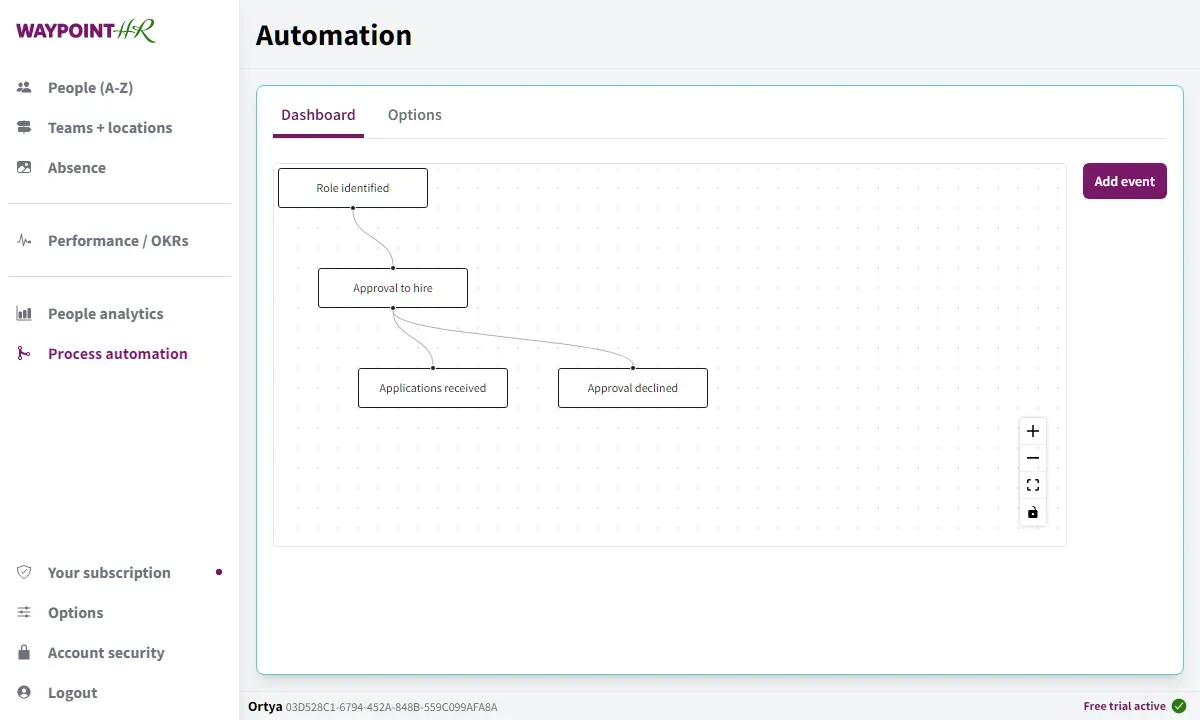The benefits of HR automation
Help your HR department to be more strategic by allowing them to spend less time on day-to-day operational aspects of transactional HR.
Automation can help remove manual steps in existing business processes, connect different IT systems, send reminders to people to ensure tasks progress, and reduce the average time to complete business operations.
Improve employee onboarding experiences, reduce time to recruit new employees and improve employee attrition rates with great HR business process automation.
Flexible and easy to use process creation
Connect your existing HR software, compliance management tools, various IT systems and more — without programming and without long lead times from implementation and software development teams.
Our visual process designer allows you to add processes that start with incoming events, organise the chain of actions according to rules, and trigger outcomes to external systems.
Process flows can be filtered, for example, to allow different process flows for different departments. Processes can branch and loop according to outcomes, allowing reminders to be sent if actions haven’t been completed, and for different outcomes to be generated according to a positive or negative action event.
Where process automation starts
HR business processes can start when the employee lifecycle begins or ends, when an employee experiences a new life event, when a business change occurs, and a wide variety of other situations.
From an automation perspective, this means triggering a process from events that may occur in separate software applications that aren’t yet connected. Business processes may need to start because of a change in data, for example, when compliance checks need renewing. Other business processes are triggered manually, for example, by a manager from a dashboard.
Our software can connect to different platforms using webhooks, API connections or direct data imports. Data can be imported automatically or when required, and analysed for key changes that should trigger events. Dashboards allow appropriately authorised people to initiate, progress and manage events.
